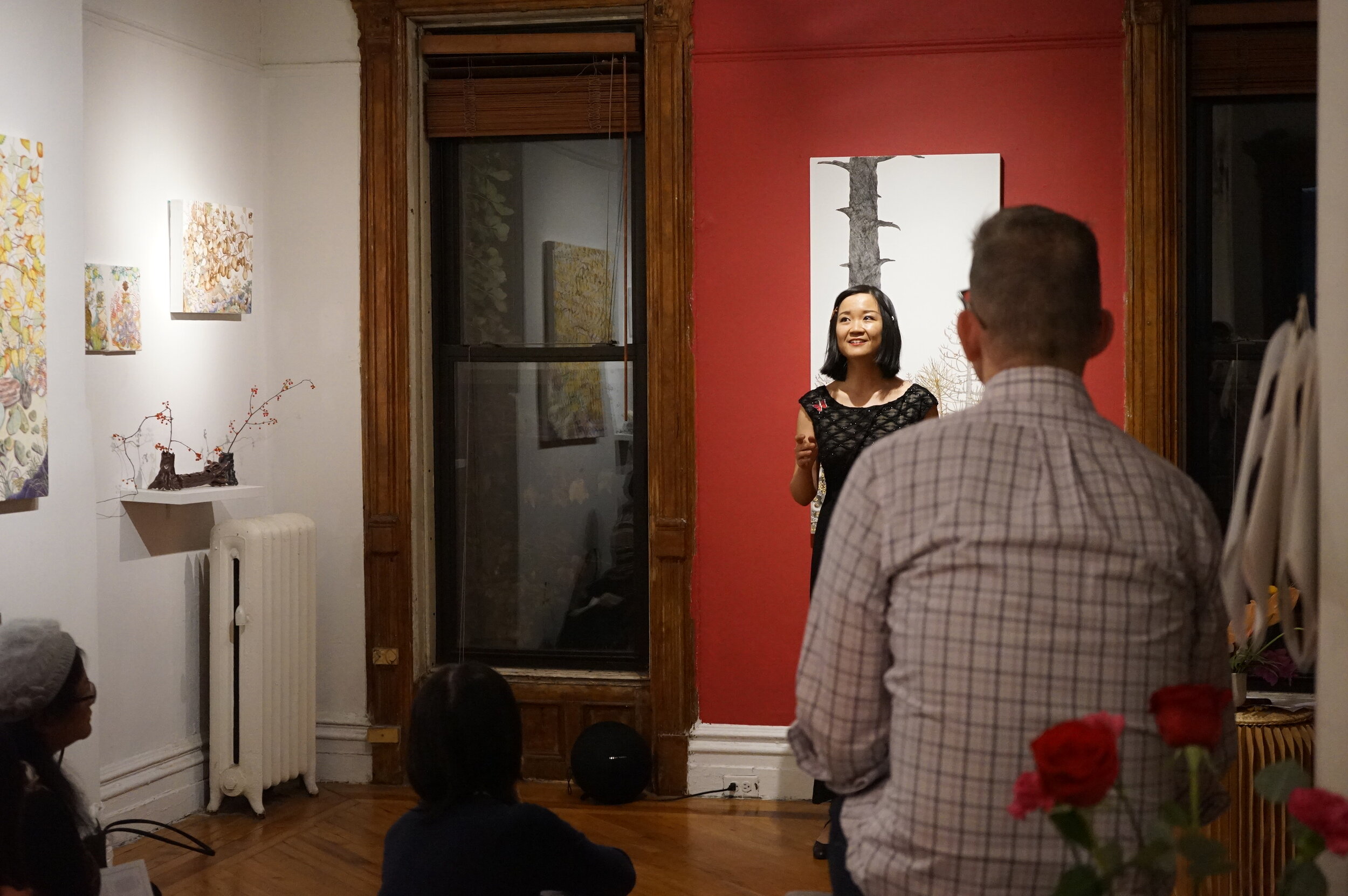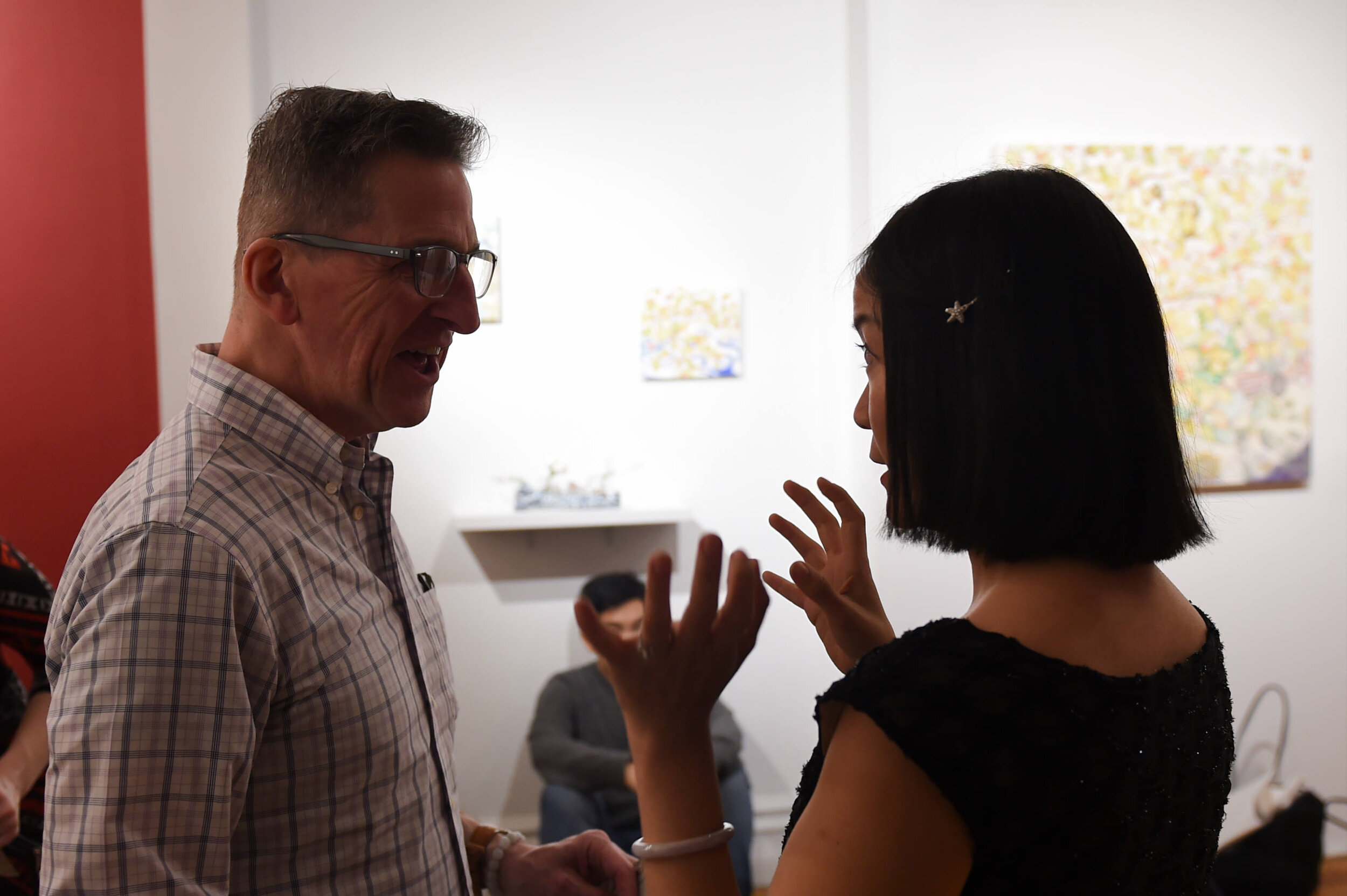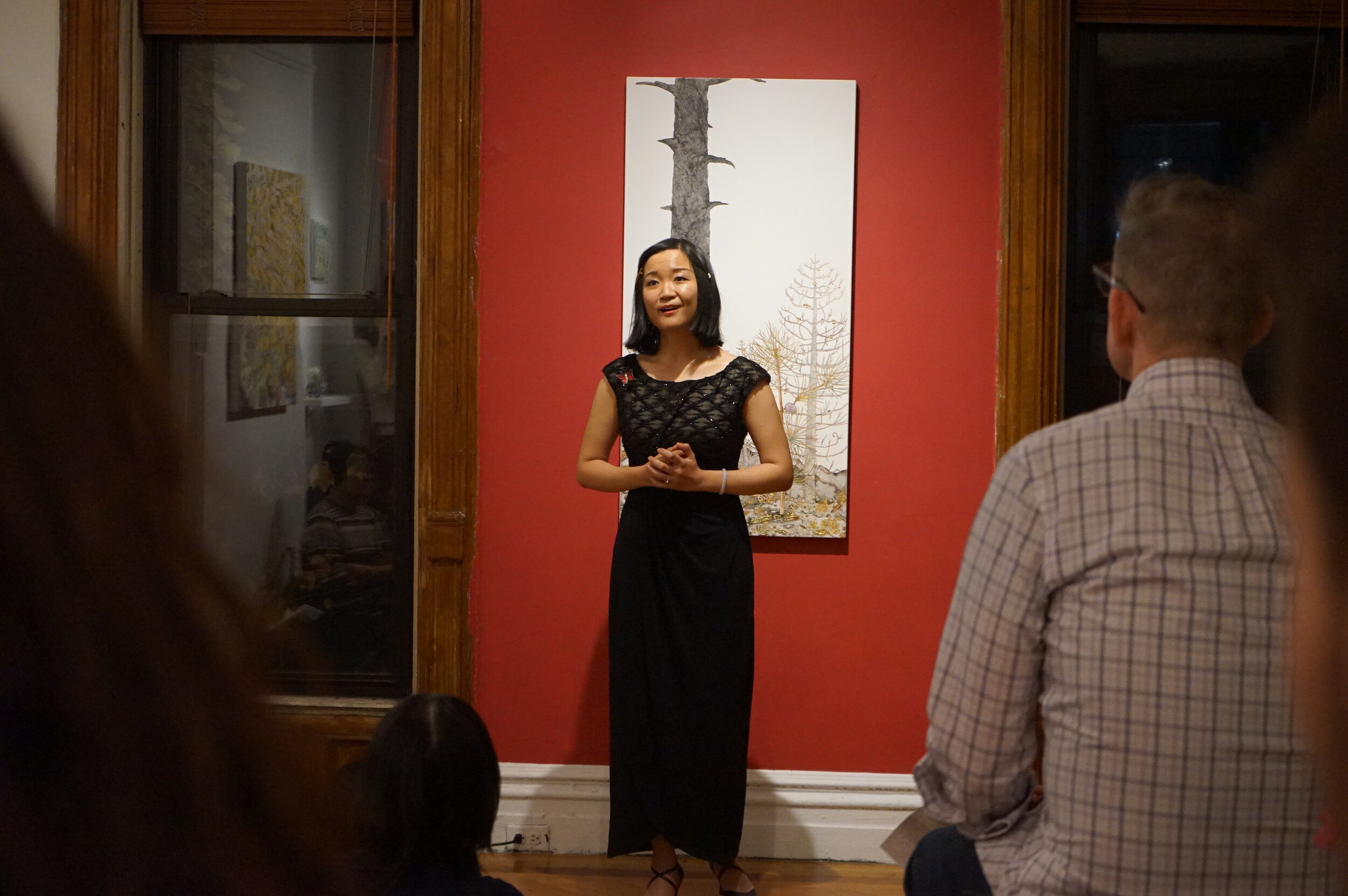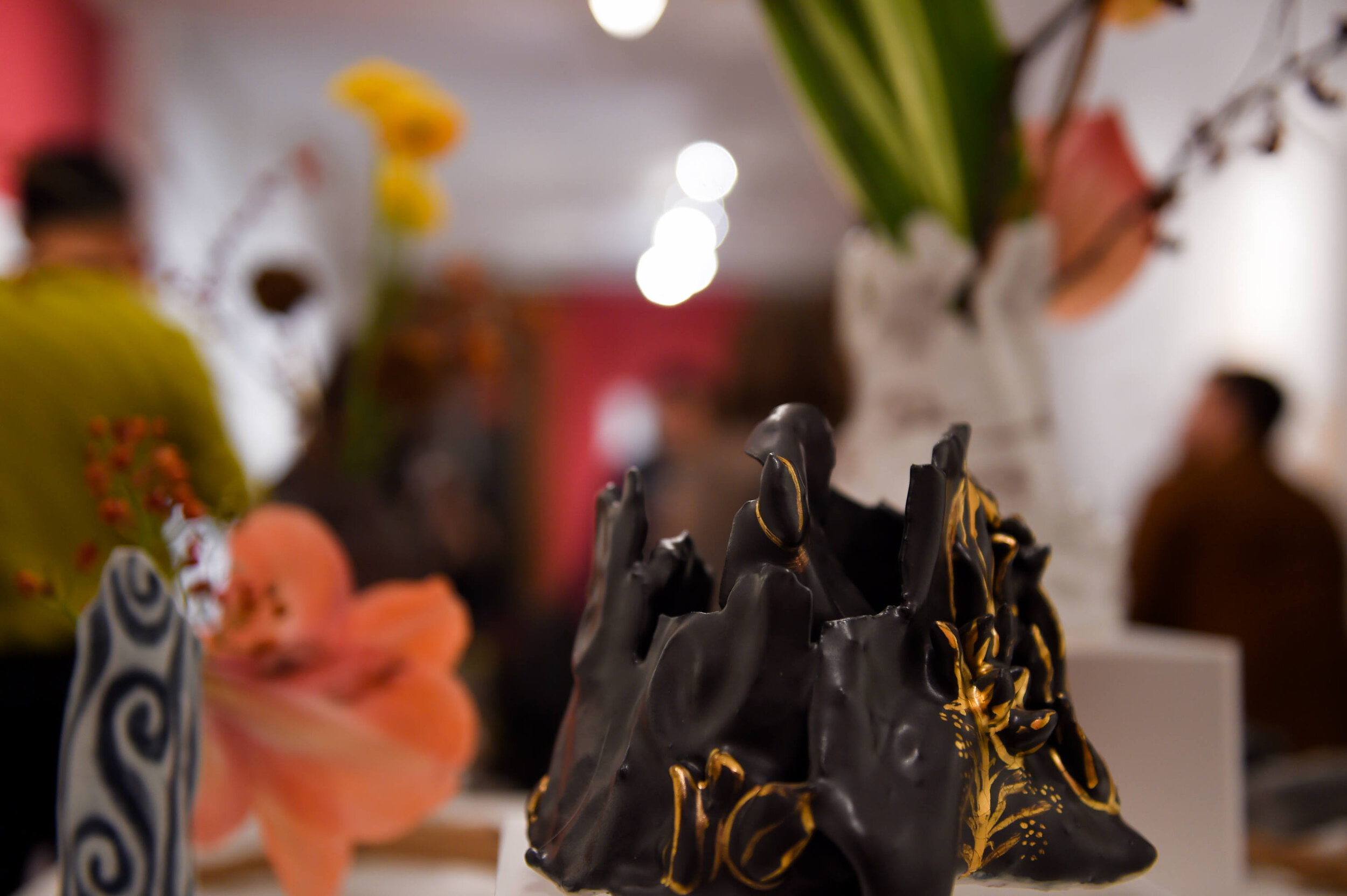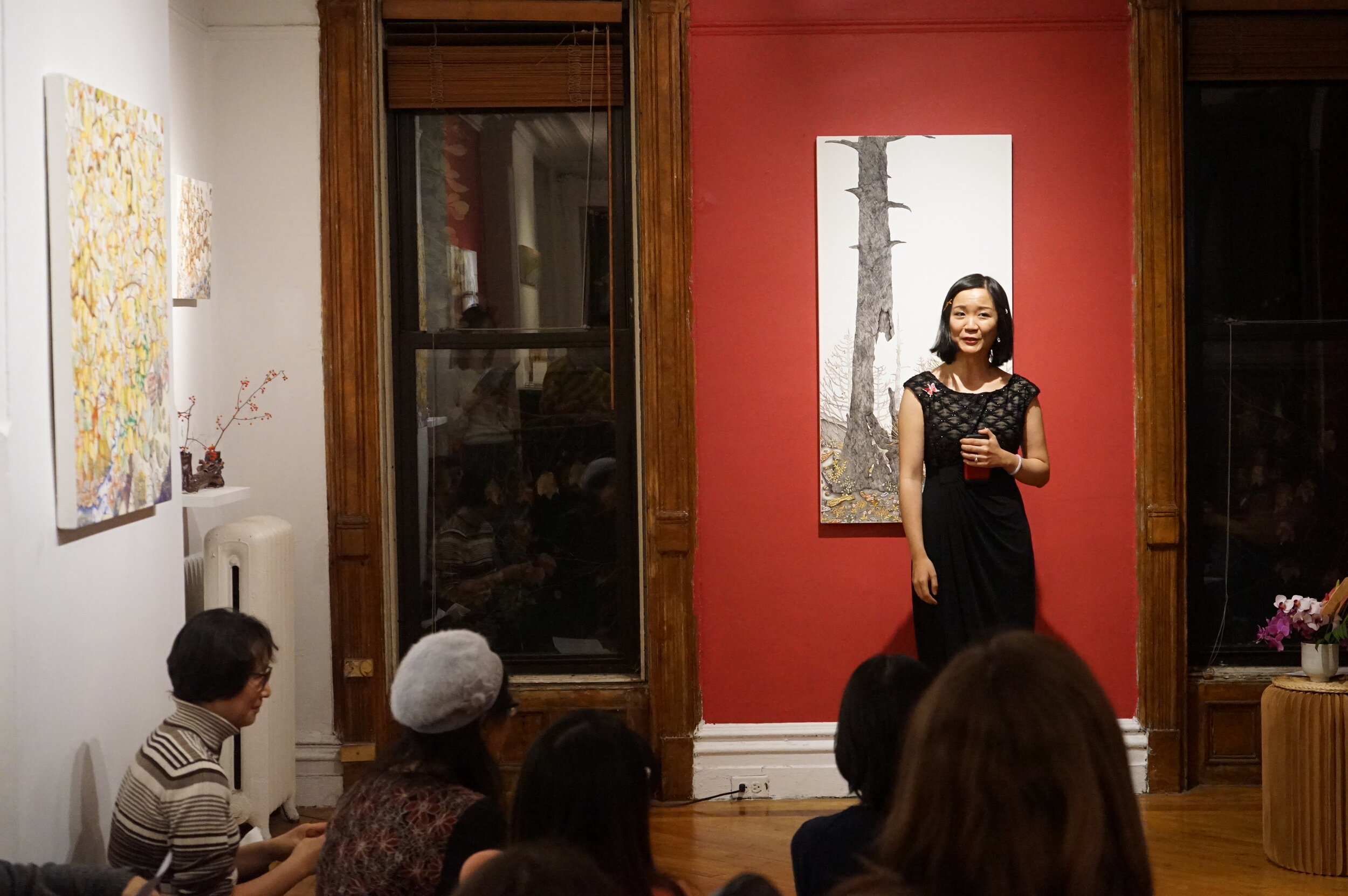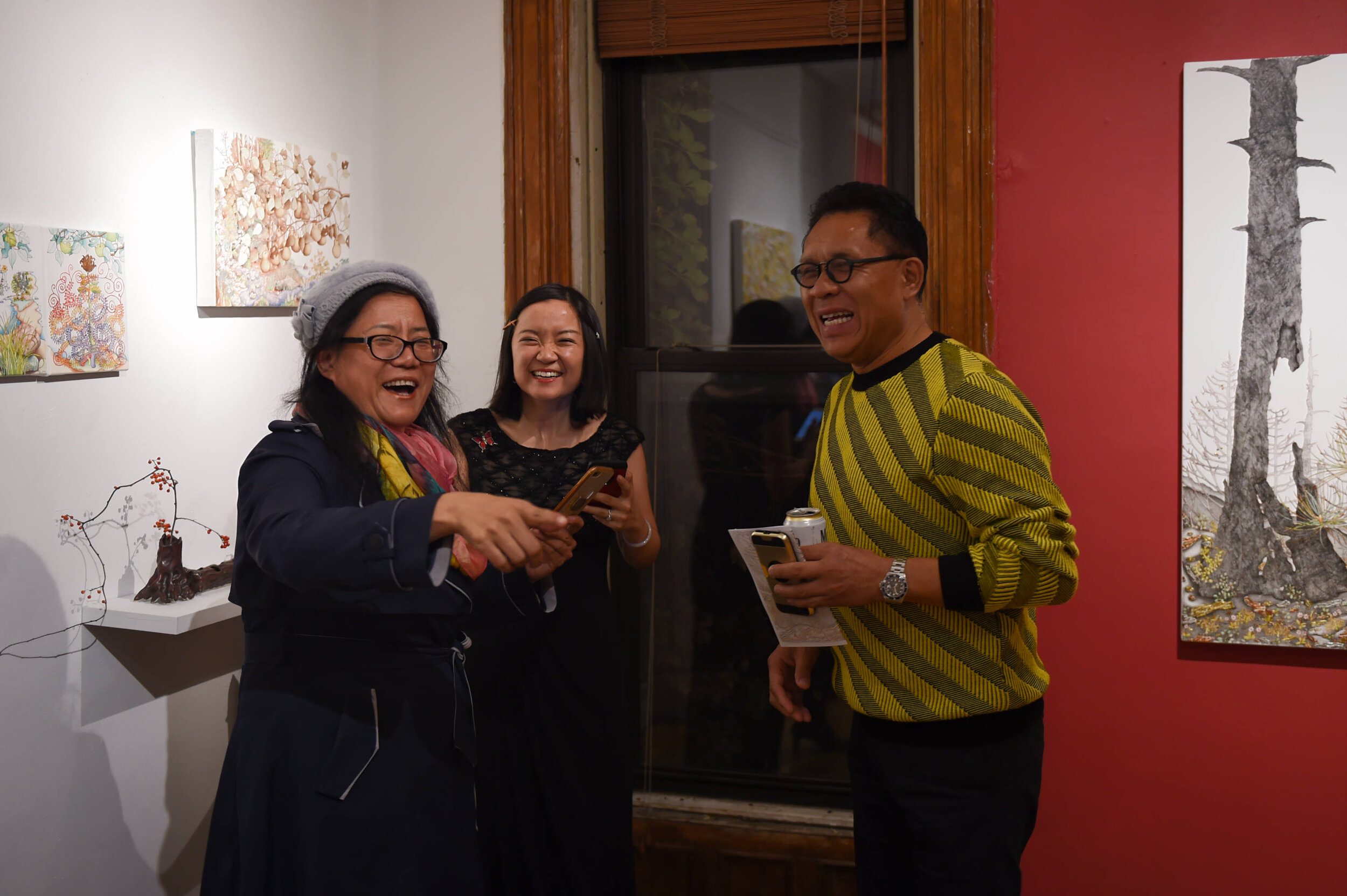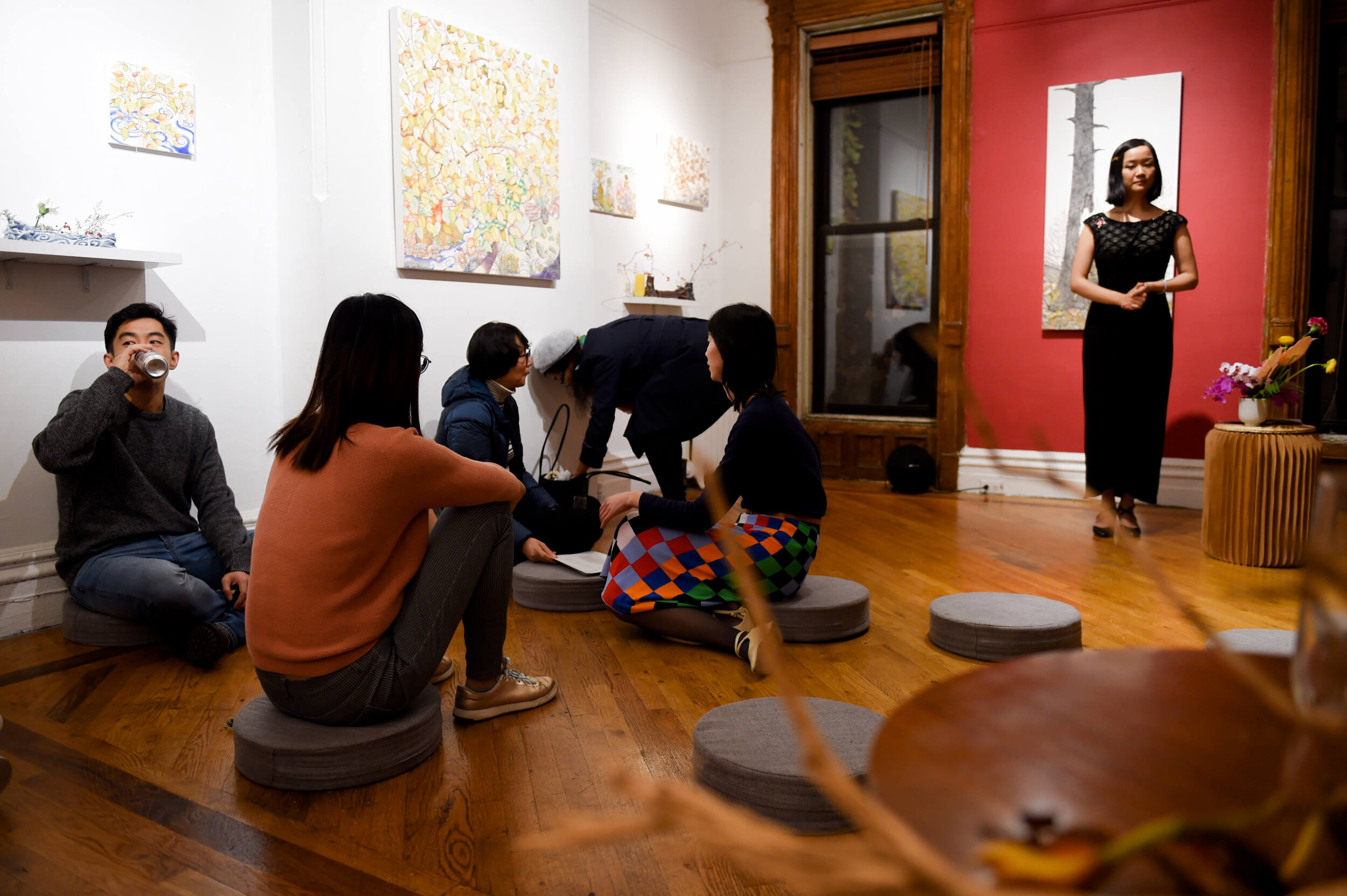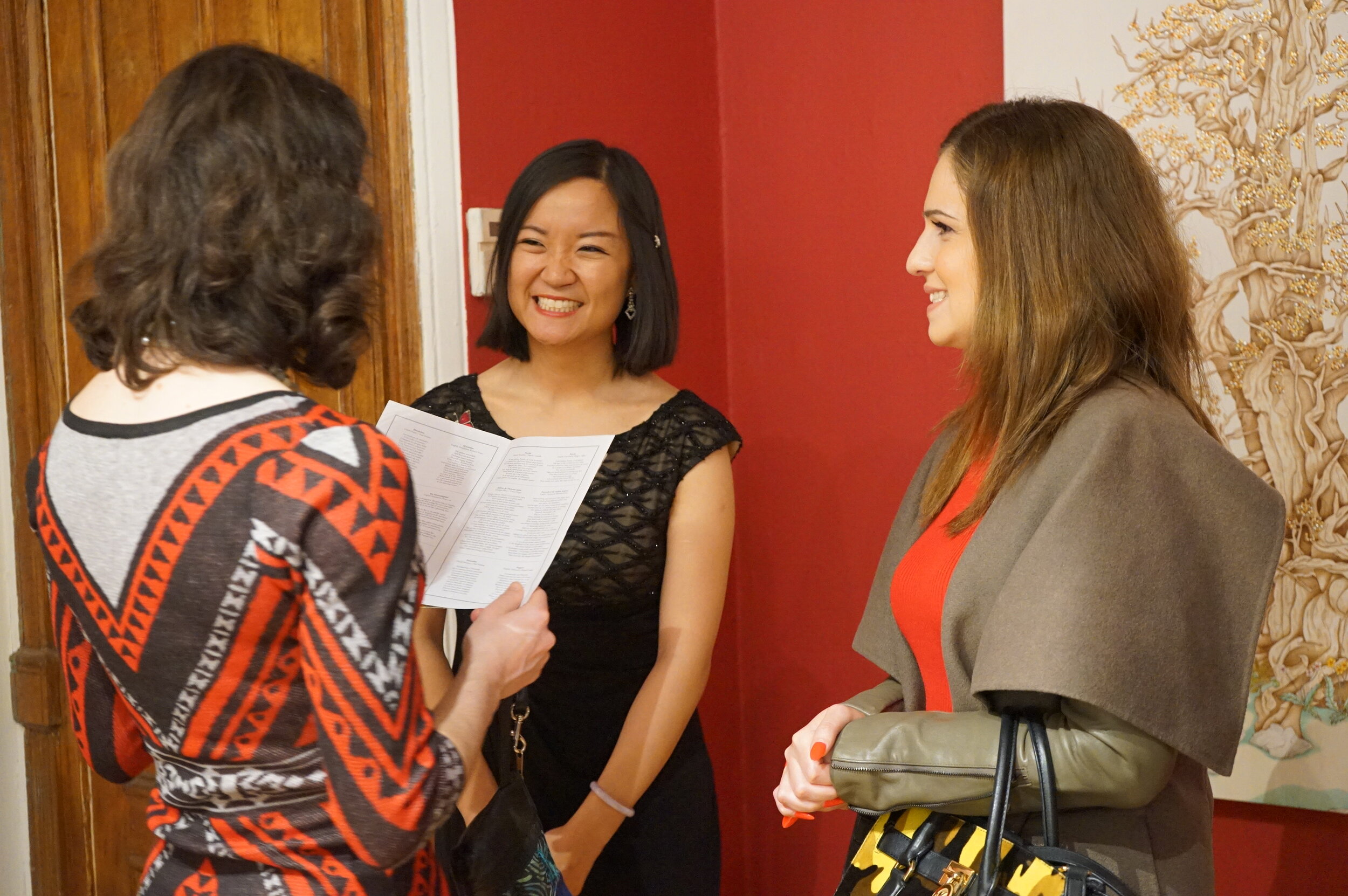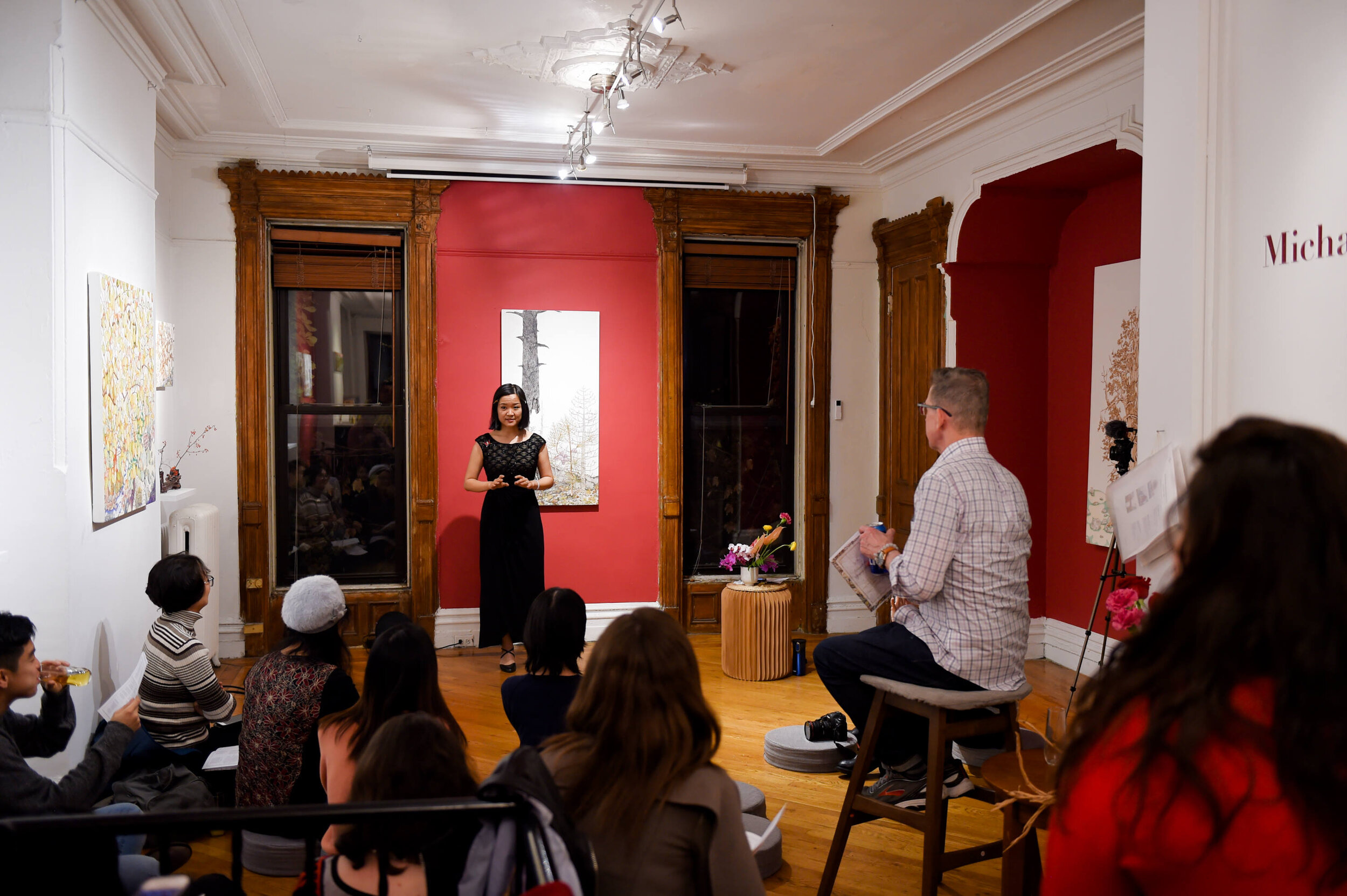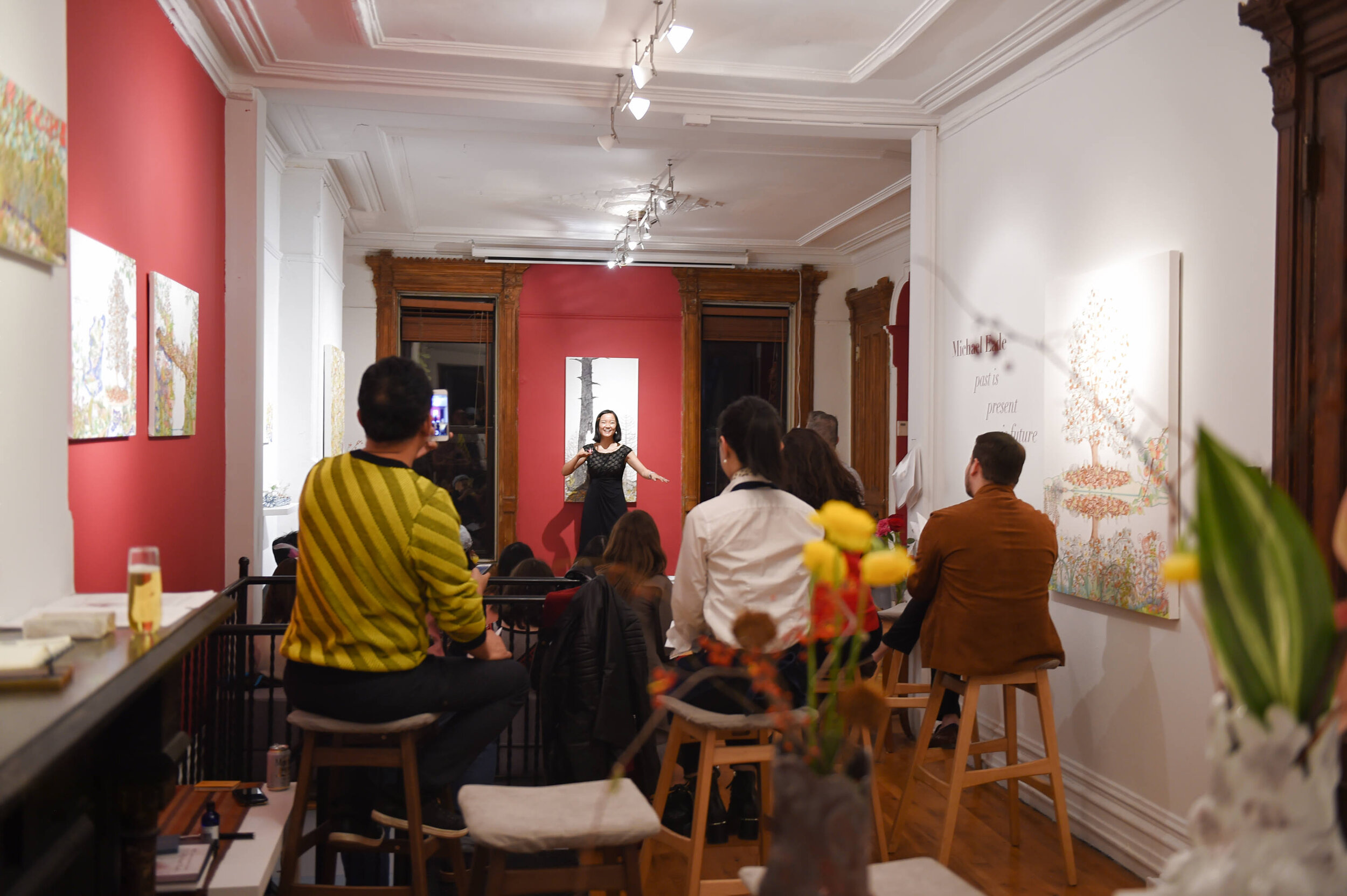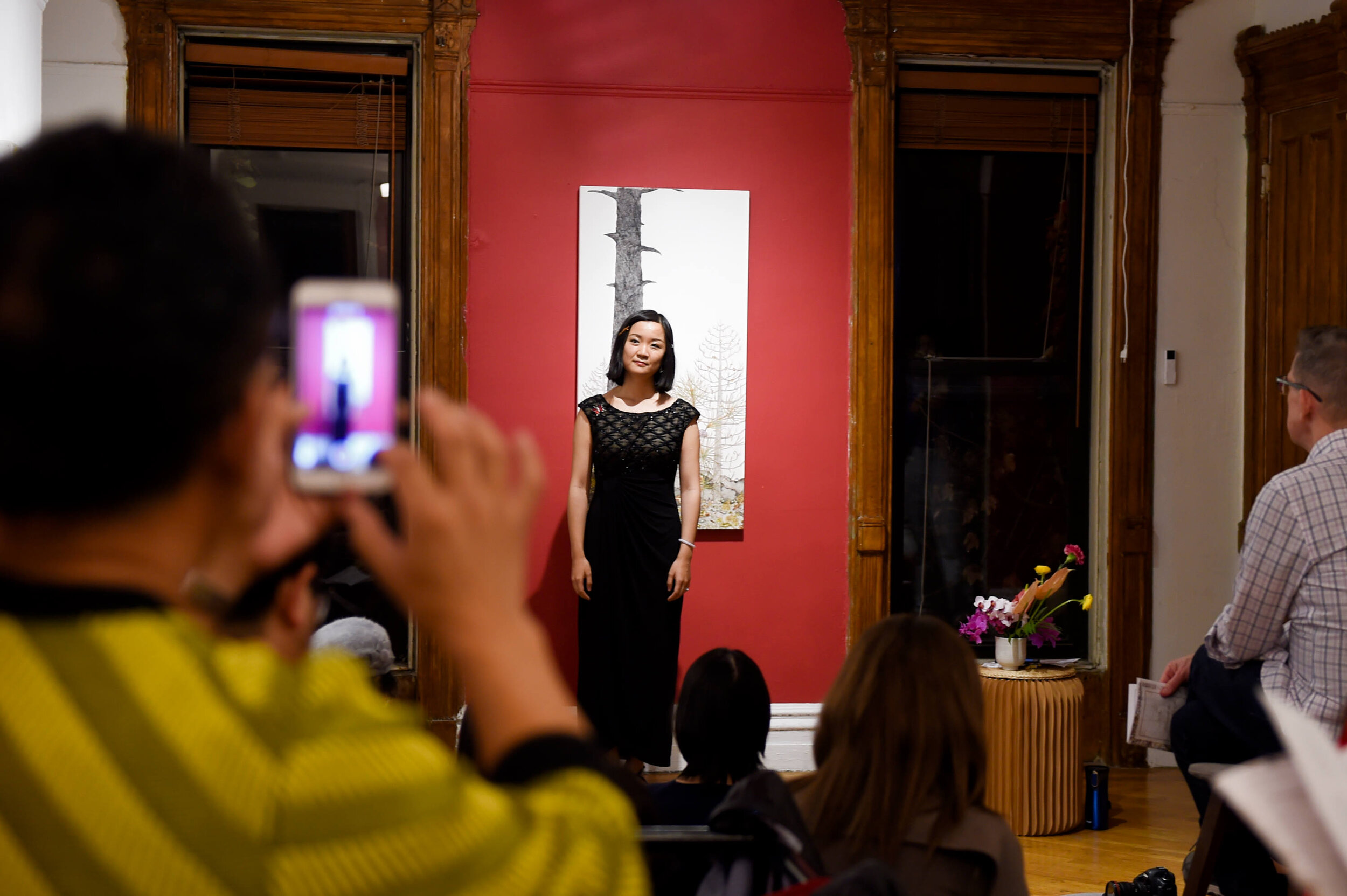Beneath the Singing Boughs - Di Zhao Vocal Recital
余音掠枝 - 赵笛独唱音乐会
Poster Design: Lynn Hai | 海报设计:海良
Time | 时间: 2019.11.2 (周六), 7–9 pm
Location | 地点: Fou Gallery, 410 Jefferson Avenue, #1, Brooklyn, New York, NY 11221
Musician | 演奏音乐家: Di Zhao 赵笛
Program Planner | 活动策划人:Lynn Hai 海良
Ticket | 票价:$12
Maximum number of participants | 人数限额:25
CLICK to RSVP
Program
1. Mandoline
2. Le colibri
3. Si Mes Vers Avaient des Ailes
4. Psyche
5. Adieux de l’hotesse Arabe
6. Fantoches
New York - Fou Gallery is delighted to invite you to join our upcoming concert - “Beneath the Singing Boughs - Di Zhao Vocal Recital” at 7-9 pm on Saturday, November 2nd. Inspired by Michael Eade’s beautiful depiction of nature and dreamscapes in his artworks, opera singer Di Zhao has selected mid-nineteenth century art songs with themes to complement the beauty and to honor nature. These art songs as French Melodie will be presented by voice accompanied by piano. French Melodie carries an even balance between melody and accompaniment, as well as lightness and grace. The sentiment in French Melodie is more prioritized than its literal sensation, and always depicts and praises nature. This a perfect reflection to Michael Eade’s artworks.
Introduction
1. Mandoline
Composer: Gabriel Faure (1845-1924)
According to fellow composer Ravel, Faure “saved French music from the dominance of the German Lied”. The Melodic lines in his art songs are simple and beautiful - often hummable and easy to set to instrumental arrangements - but also have subtle nuances and detail.
Poet: Paul Verlaine (1844-1896)
The “fragile” and “suggestive” quality of Verlaine’s verse caused his poetry to be overlooked at first. But In his last years, he became a celebrated poet, yet lived in poverty and was frequently hospitalized.
2. Le colibri
Composer: Ernest Chausson (1855-1899)
Chausson’s music bridged a gap between romanticism and impressionism. He didn’t leave behind many songs, but the quality and originality of his compositions are consistently high.
Poet: Leconte de Lisle (1818-1894)
Chausson was often inspired by poems that were serious and contemplative. Leconte de Lisle was a poet that had humble beginnings and nearly gave up on writing. Lisle ended up playing a leading role in the Parnassian poetic movement, focusing on form and emotional detachment rather than excessive sentimentality.
3. Si Mes Vers Avaient des Ailes
Composer: Reynaldo Hahn (1874 - 1947)
Hahn was known as a child prodigy for composing his first songs at eight years old, and being enrolled in Paris Conservatory at ten years old. His music is calm and unpretentious, shunning unusual composition techniques.
Poet: Victor Hugo (1802-1885)
Hugo is one of the greatest and best-known French writers, and a leader of the Romantic movement in literature. Hahn preferred poetry that complemented his calm, elegant musical style.
4. Psyche
Composer: Emile Paladilhe (1844-1926)
As a child prodigy, Paladilhe studied at the Paris Conservatory when he turned ten years old, and was the youngest winner of Grand Prix composition contest. His musical style is not as unique as many other composers, and most of his melodies were pleasant and delightful.
Poet: Pierre Corneille (1606-1684)
As a French tragedian, Corneille is considered one of the greatest seventeenth-century French dramatists.
Psyche is a play written by Corneille based on the story of Greek lovers Cupid and Psyche.
5. Adieux de l’hotesse Arabe
Composer: Georges Bizet (1838-1875)
Bizet is the composer of one of the greatest operas in history - Carmen. He was also an amazing pianist, but rarely performed in public. Bizet Had his own sense of rhythmic style and dramatic flair, and his accompaniments always have colorful patterns.
Poet: Victor Hugo (1802-1885)
This poem by Hugo is an example of fascination with oriental subjects that affected poets, musicians, and artists of this period. Its exotic imagery is very alluring for listeners in the past and present, who have not seen the beauties of the Middle East.
6. Fantoches
Composer: Claude Debussy (1862-1918)
Debussy is one of the greatest precusors of twenty-century music by developing his own harmonies and orchestral colors, that were derided and resisted by his contemporaries. He wrote expertly for the voice and selected poetry carefully to blend with his music. His musical style contains unusual harmonies as well as the use of the whole-tone or pentatonic scales, with many glittering passages and webs of figurations.
Poet: Paul Verlaine (1844-1896)
Despite the devious intrigue, the mood in this poem is gay and spontaneous. There is an A-tue-tete reflecting the scream of the bird in the music.
纽约 - 否画廊盛情邀请您参加将于11月2日星期六晚上7-9点举行的《余音掠枝》赵笛独唱音乐会。赵笛为迈克尔·伊徳对自然和梦景的描绘所触动,选择了一系列十九世纪中期的艺术歌曲来称颂美景、歌唱自然。这些艺术歌曲属于French Melodie的音乐形式,将以独唱和钢琴伴奏的形式呈现。French Melodie在主旋律与伴奏声部之间有着绝佳的平衡,同时具有轻盈优雅的艺术特色。相比起歌词文字的雕琢,它更重视纯粹的情感表达。French Melodie常常以描绘和歌颂自然为主题,这正是对迈克尔·伊德作品的完美呼应。
1. Mandoline
作曲:加布里埃尔·弗雷(1845-1924)
据作曲家拉威尔评论,弗雷“从德国谎言的统治中拯救了法国音乐”。他所作艺术歌曲中的音乐旋律线条简单而优美,往往易于为乐器演奏,但仍包含着丰富的变化和细节。
诗人:保罗·威尔莱恩(1844-1896)
威尔莱恩诗歌的“脆弱”和“暗示”性质使他的诗歌起初被忽视。在他文学生涯的最后几年,他成为了一位著名的诗人,但仍生活在贫困中并经常住院。
2. Le Colibri
作曲:欧内斯特·考森(1855-1899)
考森的音乐弥合了浪漫主义和印象派之间的鸿沟。他去世后没有留下很多作品,但是所有作品都始终具有很高的质量和原创性。
诗人:莱孔特·德·莱尔(1818-1894)
考森的艺术歌曲经常受到严肃而沉思的诗歌的启发。莱孔特·德·莱尔是写作生涯之初缺乏自信的诗人,几乎放弃写作。 但莱尔最终在Parnassian诗歌运动中起了主导作用,作品专注于形式和情感上的分离,而非过分的感伤。
3. Si Mes Vers Avaient des Ailes
作曲家:雷纳尔多·哈恩(1874-1947)
哈恩因在八岁时创作第一首歌曲而闻名,并在十岁时就读于巴黎音乐学院,因此被称为儿童天才。他的音乐沉稳朴实,并避免着晦涩的作曲技巧。
诗人:维克多·雨果(1802-1885)
雨果是法国最伟大、最著名的作家之一,也是浪漫主义文学运动的领导者。哈恩偏爱他的诗歌,以补充自己沉稳优雅的音乐风格。
4. Psyche
作曲:埃米尔·帕拉迪尔(1844-1926)
帕拉迪尔也是一位音乐神童,十岁那年就在巴黎音乐学院学习,是最年轻的大奖创作竞赛得主。他的音乐风格不像其他作曲家那么个性十足,其旋律大多轻快愉悦。
诗人:皮埃尔·科内耶尔(1606-1684)
作为一位法国悲剧作家,科内耶尔被认为是17世纪最伟大的法国戏剧家之一。《生灵》是科内耶尔根据希腊神话中的恋人丘比特和塞琪的故事而写的戏剧。
5. Adieux de l’hotesse Arabe
作曲:乔治·比才(1838-1875)
比才是历史上最伟大的歌剧之一《卡门》的作曲家。他还是一位出色的钢琴家,但很少在公共场合演出。 比才的作品拥有自己的节奏感和戏剧性,伴奏总是具有丰富多彩的编配。
诗人:维克多·雨果(1802-1885)
雨果的这首诗是当时文学界迷恋东方题材的一个显著例子。东方题材影响了这一时期的诗人、音乐家和艺术家,充满诱惑的异国情调吸引着从未见过中东美景的听众们。
6. Fantoches
作曲:克劳德·德彪西(1862-1918)
德彪西是二十世纪最伟大的作曲家之一,发展和推动了独特和声的色彩,尽管遭到了他同时代人的抵制。他擅长为人声作曲,并精心挑选诗歌与音乐融为一体。他的音乐风格包含不寻常的和声,多使用全音阶或五音阶音阶,以及许多闪光的段落和具像化的结构。
诗人:保罗·威尔莱恩(1844-1896)
尽管描绘了诡计多端的阴谋,但这首诗的心情却是喜悦而诚挚的。它包含有一个A-tue-tete形式,反映了鸟的鸣叫。
Musician: Di Zhao
Di Zhao has performed all over the world, beginning with a 1994 televised Christmas concert in Lanzhou. After studies of bel canto singing in the US, Europe, and China, Di has gone on to give solo performances in spaces including the Lincoln Center, Carnegie Hall, and the United Nations. Most recently She was the grand prize winner of CCTV's 2018 "Upcoming Star” Competition in Beijing, China. Notable roles include Susanna in The Marriage of Figaro, Despina in Cosi fan Tutte, and Marian in The Music Man.
音乐家:赵笛
赵笛的音乐生涯起始于1994年中国甘肃兰州电视台的圣诞音乐晚会上。7岁来到美国后又学习了西方的爵士乐和百老汇舞台剧。2011年毕业于新泽西的普林斯顿希敏斯特音乐学院,获得了声乐学位,后又转入奥地利格莱斯大学,进修歌剧艺术表演。她在林肯中心,卡耐基音乐厅和联合国都举办过独唱表演。2018年她荣获CCTV 星光青少年才艺大赛冠军。她在艺术舞台上扮演了不同类型的角色:《费加罗婚礼》中的的Susanna、莫扎特《女人心》的Despina、《音乐人》的Marian等。
Installation view of Micheal Eade: past is present is future, photo credit to Nadia Peichao Lin, © Micheal Eade, courtesy Fou Gallery.
